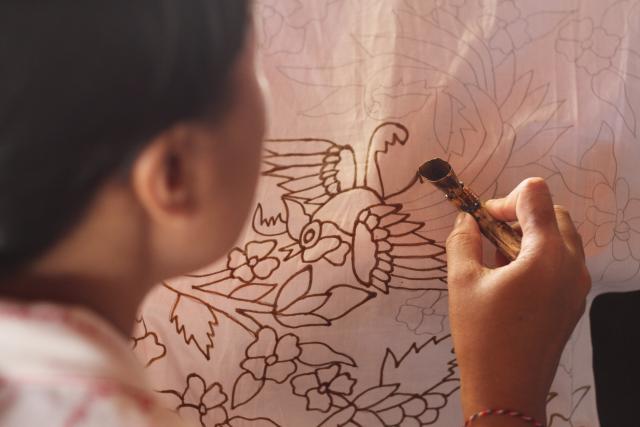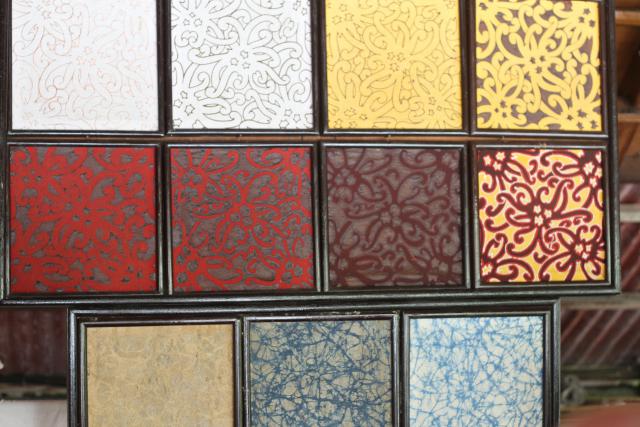Reply to comment
Bali: Batik
ktuli — Sun, 02/20/2011 - 19:56
Well, I don't know if anyone else is tired of the dive photos yet. I'm certainly not, but I figured I'd switch things up a little and bounce back to Bali for a couple posts to give others a break just in case.
One of the things we did on our second day in Bali was to visit some of the crafts areas. Bali is well known for wood and stone carving, silversmiths, and for a type of fabric called batik. I didn't take too many photos this day, but I did take this one of a woman making batik fabric, and really love it.
Technical Data: Canon EOS 7D, Canon EF 50mm f/1.8 II, 1/60th sec at f/2.8, ISO 500 (auto). No post production
What Works: The composition is strong with the woman's head taking up a third of the shot and her hand resting on one of the other thirds. The balance given to the photo by the darkened drawing offsetting the lighter area of the photo. But really, what makes this photo nice is the shallow depth of field produced by the relatively wide aperture of f/2.8.
What Doesn't Work: Honestly, I find it a bit tough to find anything wrong with this photo. The dark shape in the bottom right is a tad distracting, but really - that seems like nitpicking.
Anyway, I guess I could explain what is going on in this photo.
Batik fabric is made by applying a layer of beeswax to the fabric, then dying it. The wax prevents the cloth from being dyed and is then removed by boiling the cloth. This produces a negative image of the pattern. If a piece of fabric is to have multiple colors, the wax is reapplied again to the other areas and the fabric is dyed again with the subsequent colors. Each process is done by hand by women who use the tool shown here to trace or fill in the pattern with the beeswax.
The photo below shows how a two color pattern is created, first from a pencil drawing, to a wax traced drawing, then dyed, then more wax applied, then more dye, etc, etc.
The batik cloth is used often to make sarongs which are worn by Balinese men during temple ceremonies, and by women just about any time. Foreign tourists are required to have their knees covered while visiting temples as well, so sarongs are often available for rent outside of temples. Anya and I purchased some batik sarongs partially as souvenirs, and to have available when visiting the temples. Anya's has a nice flower pattern on it, while mine was printed with a bunch of different sea creatures (of course)!
- Bill





